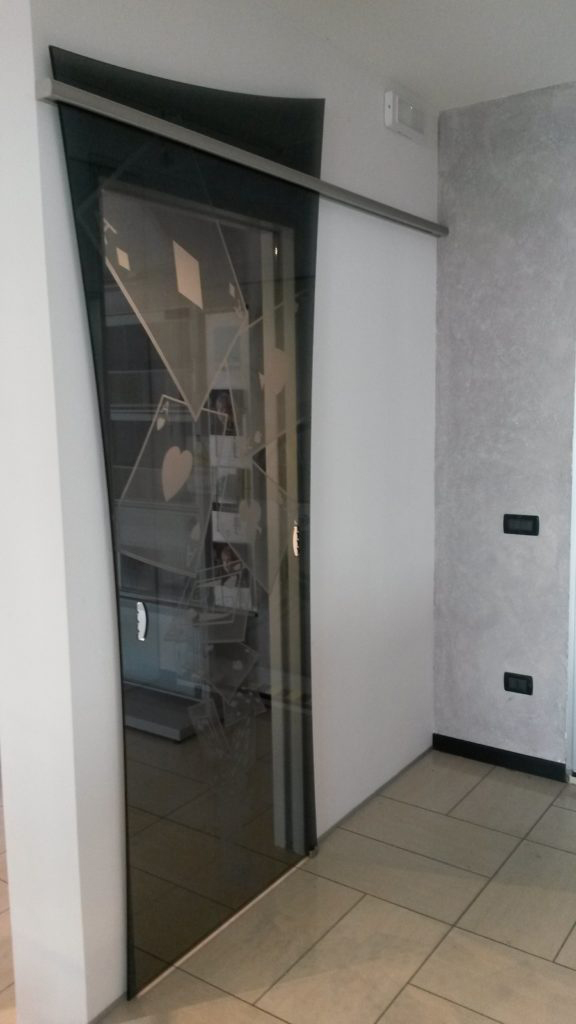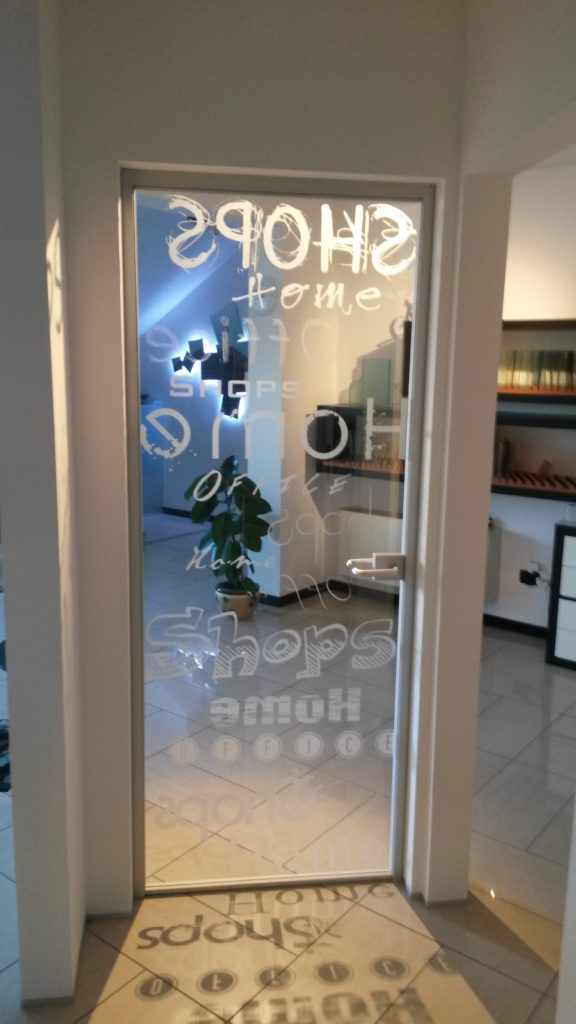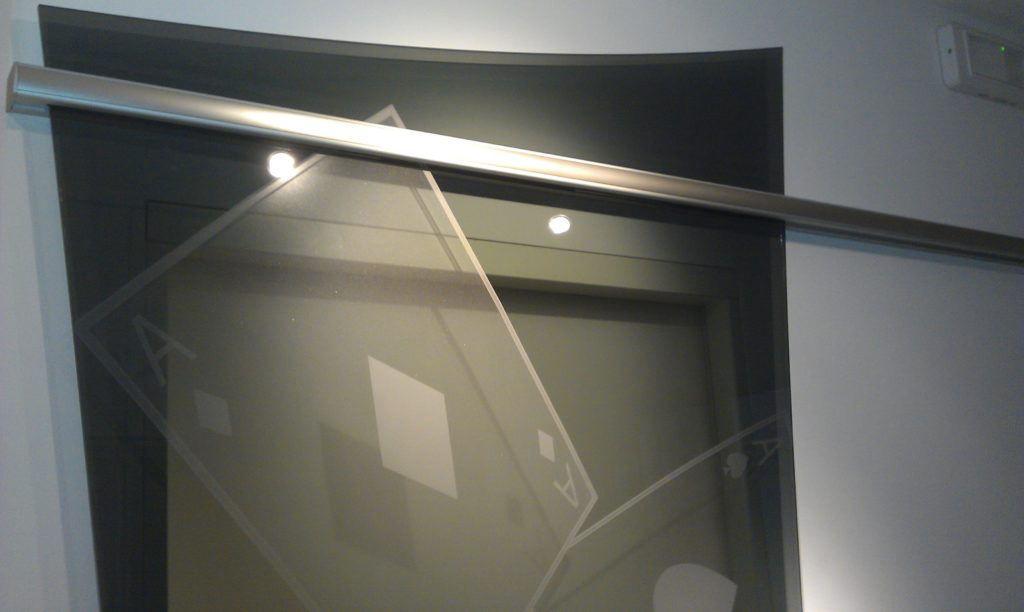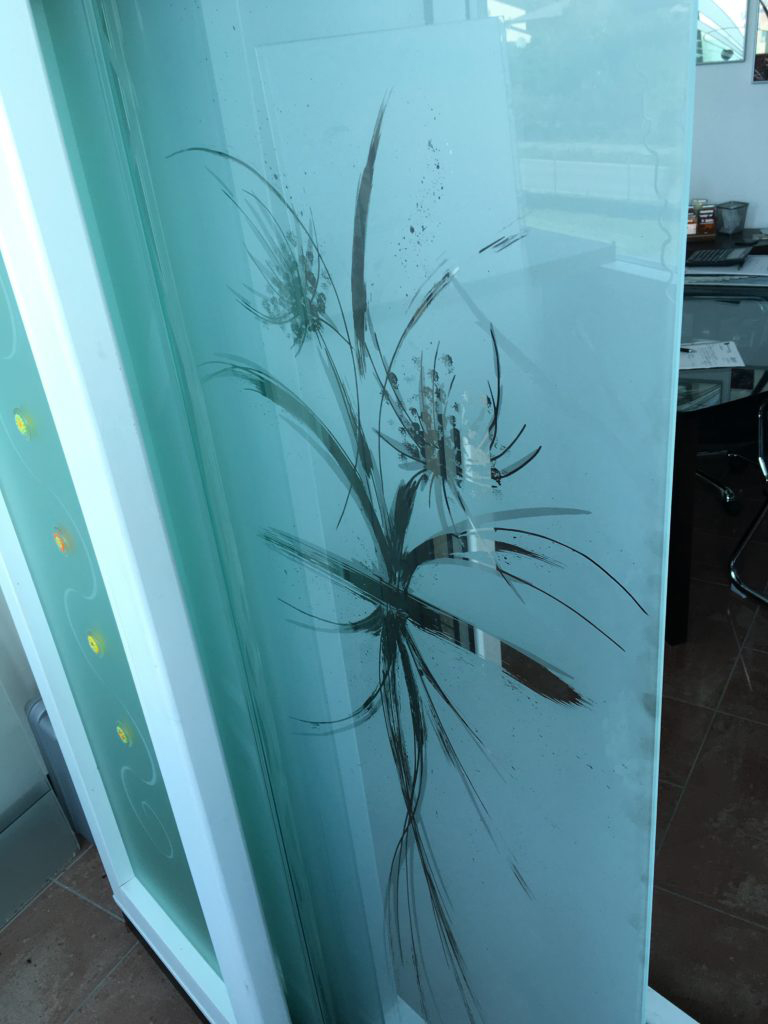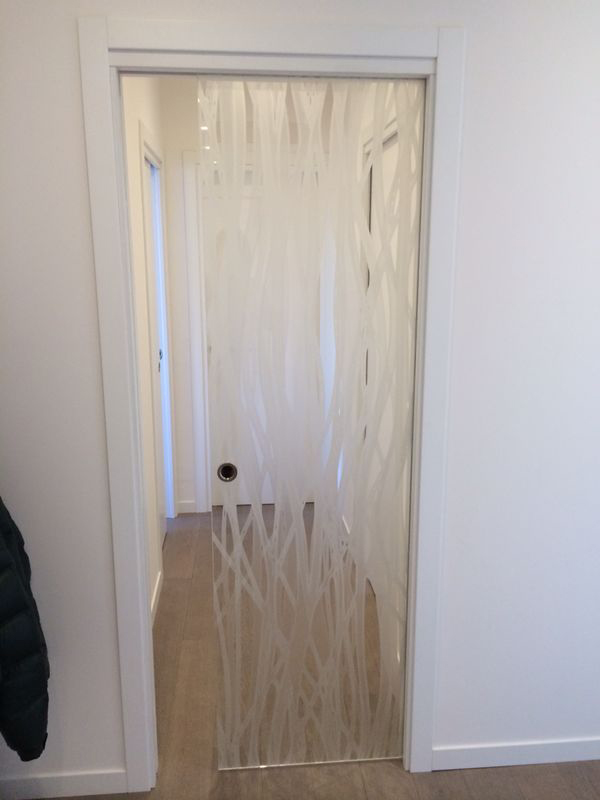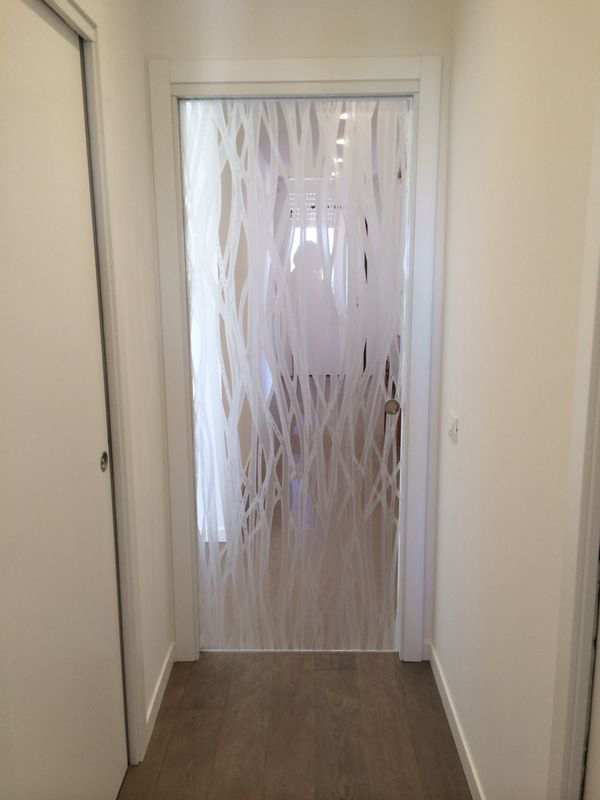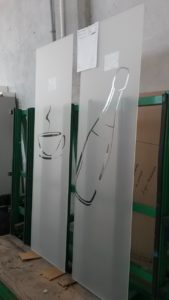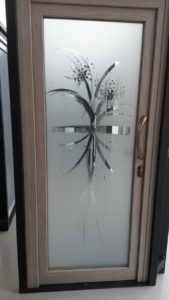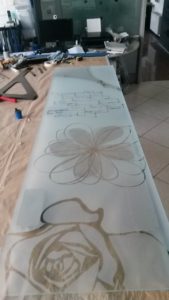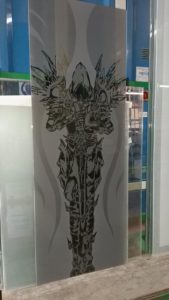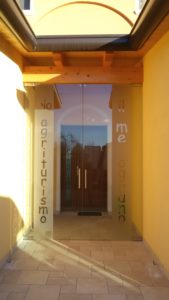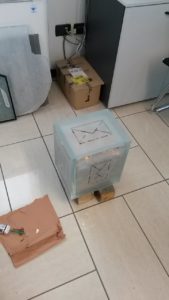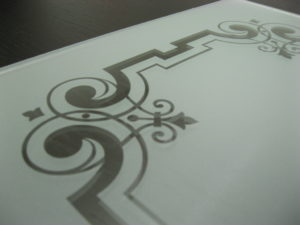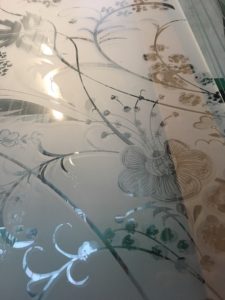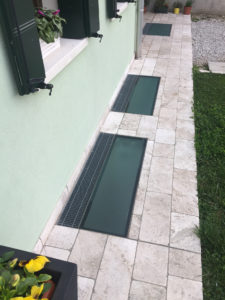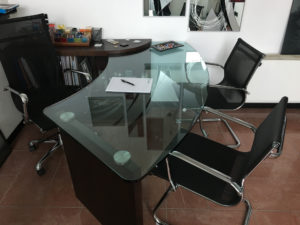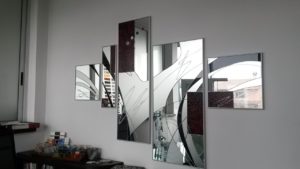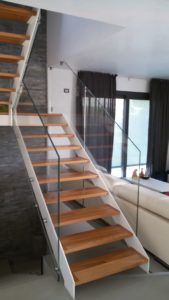Vetreria Brunetta, nella sua poliedrica offerta, ha – attraverso una costante attività di ricerca – maturato una specifica competenza nelle trasformazioni artistiche del vetro piano ed, in particolare, nella tecnica della sabbiatura.
Vale, allora, la pena ricordare come il processo di sabbiatura sia una lavorazione consistente in un procedimento meccanico che consente di eroderne la superficie per ottenere decorazioni, disegni e particolari effetti.
Si tratta di una tecnica molto versatile che ben si presta anche alla creazione di livelli di trasparenza progressiva. Le sabbiature, infatti, si distinguono in 3 macrocategorie:
– leggere: il vetro mantiene una trasparenza sufficiente a distinguere ombre e colori;
– coprenti: la sabbiatura va a mascherare i colori ma è ancora possibile (anche se in misura minore rispetto a quella leggera) intravedere le ombre;
– incise: viene creato un effetto di bassorilievo nella faccia del vetro che dona alla forma voluta una nota tridimensionale. La tecnica ha la particolarità di dare luogo ad effetti di rifrazione della luce che mancano nelle altre forme di sabbiatura.
Ognuna di esse può essere applicata su diverse porzioni della stessa faccia di un vetro e, pertanto, gli effetti che si possono ottenere sono tra i più vari e personalizzabili.
Senza dimenticare, poi, che lo stesso motivo o disegno può essere:
– in positivo (utilizzando la parte non destinata ad essere sabbiata, cioè quella trasparente, quale contorno del disegno scelto);
– in negativo (utilizzando la parte sabbiata quale “contorno”: così da realizzare per mezzo della “trasparenza” i motivi od i disegni voluti).
Materiali e colori
La tecnica della sabbiatura, poi, si presta ad essere utilizzata su una gamma molto ampia di possibili “basi” vetrate.
Ne nominiamo solo alcune (ma lasciamo alla vostra curiosità il proporci nuove sfide):
– la vetrata isolante di un serramento (la sabbiatura apposta su una delle facce protette all’interno della camera della vetrata non sentirà il … “passare del tempo”);
– il vetro piano monolitico di qualsiasi tipologia e tonalità;
– il vetro stratificato (o laminato): in questo caso la laminazione avviene direttamente nei forni della Vetreria Brunetta e le personalizzazioni si arricchiscono di ulteriori possibilità. Nella pellicola di incollaggio dei vetri piani monolitici si potranno utilizzare materiali colorati (con una scelta che davvero abbraccia pressoché tutta la “tavolozza”) per ottenere giochi di tonalità adattabili ad ogni esigenza.
Da quanto sopra è possibile immaginare che la tecnica della sabbiatura si presta ad essere utilizzata in tutte le applicazione del vetro (in campo edilizio ed artistico).
Anche qui sia sufficiente ricordare le principali:
– portoncini d’ingresso realizzati in vetro;
– le finestre e le porte-finestre (in vetro singolo o in vetrata isolante);
– le porte interne a tutto vetro, così come qualsiasi porta interna con inserti in vetro;
– le pareti divisorie in vetro (un esempio che viene subito alla mente sono gli ambienti dedicati ad uffici in strutture “open-office”);
– le balaustre ed i corrimano in vetro (così come quelli realizzati con semplici inserti in vetro);
– gli specchi ed ogni elemento di arredo in vetro.




